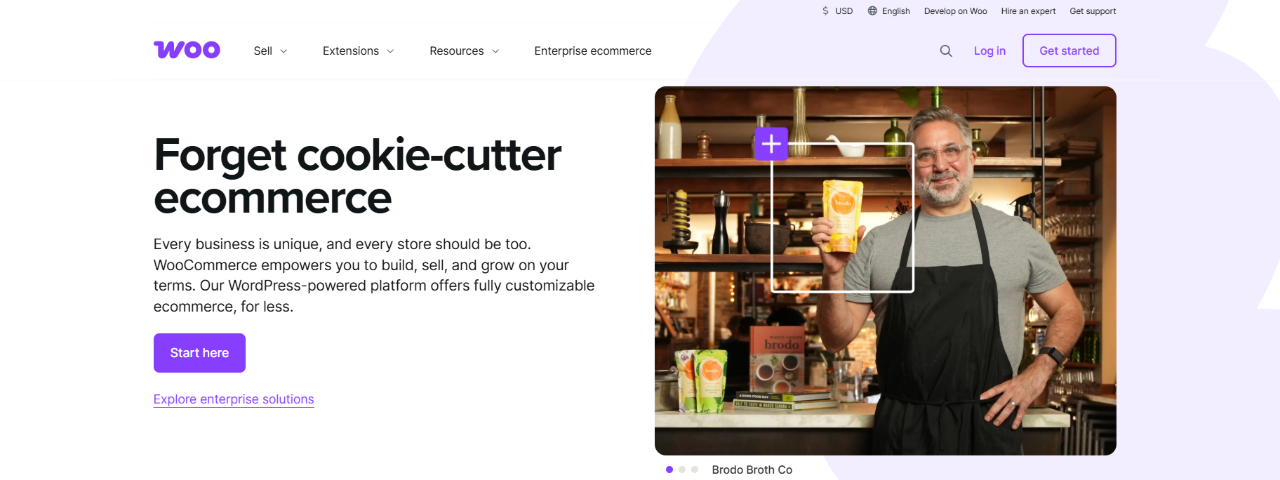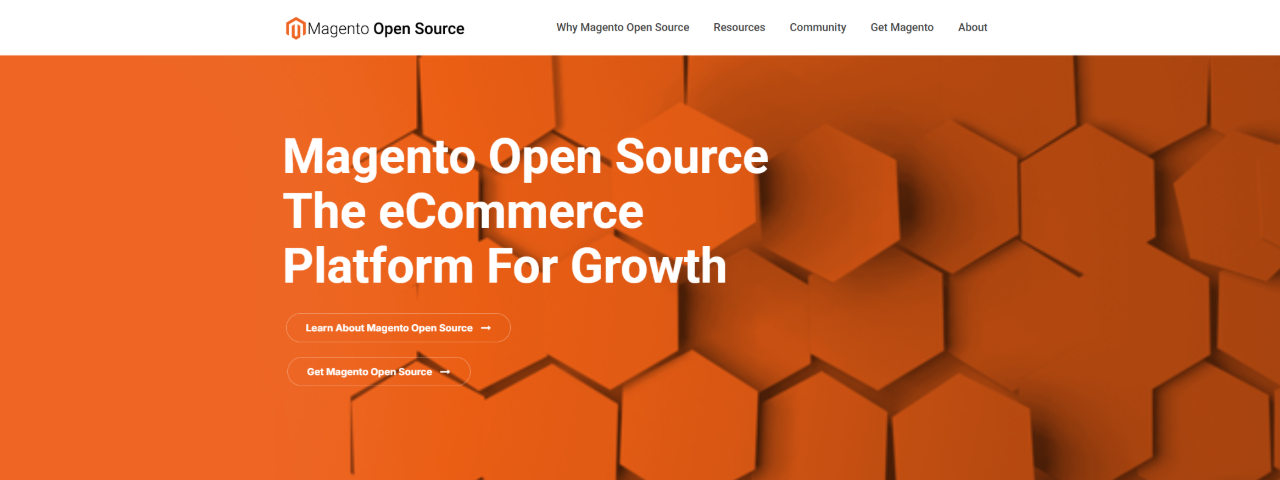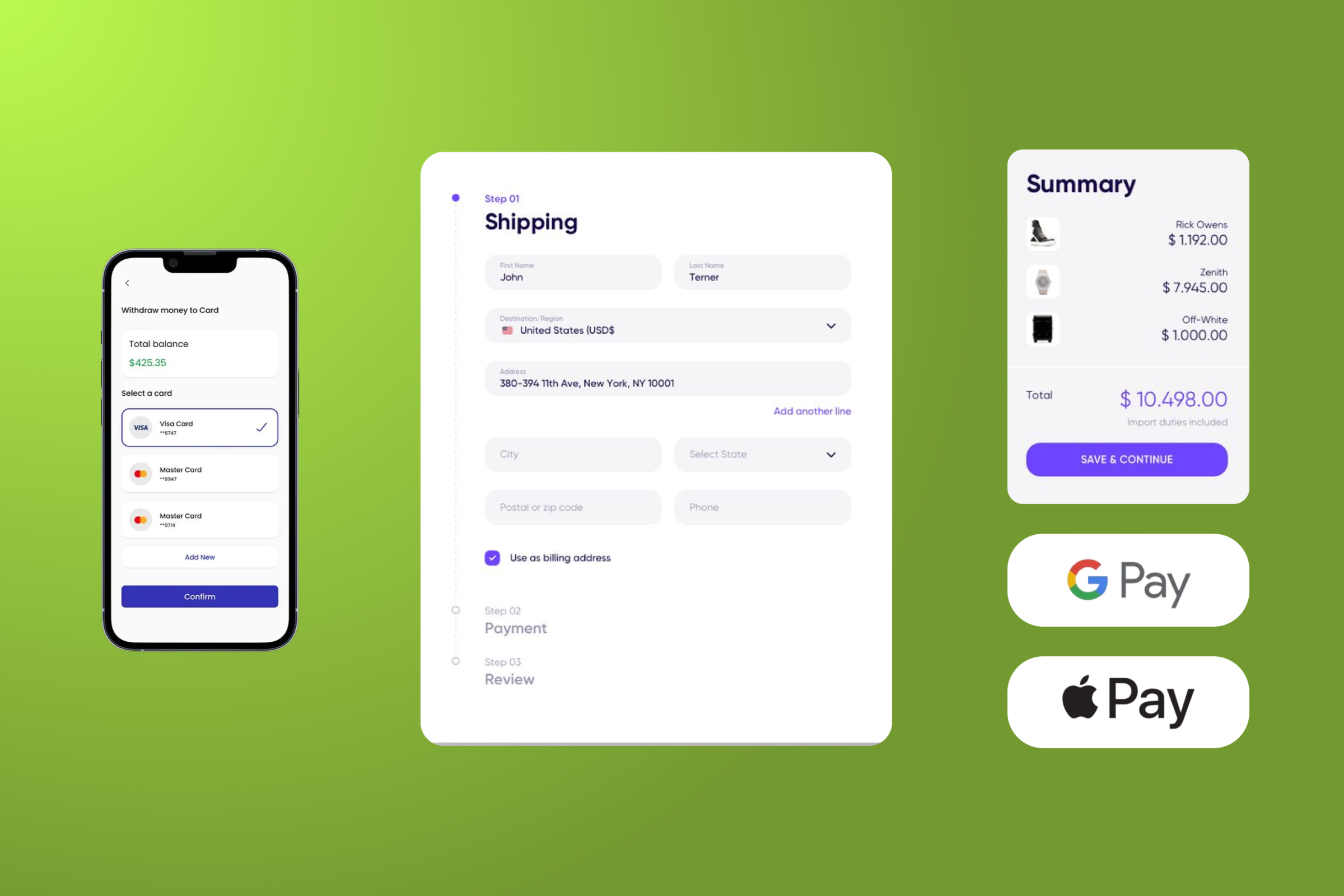E-commerce Platforms Compared: Key Feature Differences
Selecting an e-commerce platform has become a strategic inflection point for digital businesses.
What was once a technical choice about hosting and payment setup now defines how efficiently a company grows, how adaptable it remains to market shifts, and how sustainable its operational costs become.
The platform is no longer background infrastructure; it shapes commercial agility, customer experience, and the economics of digital scale.
Shopify, WooCommerce, and Magento sit at the center of this decision. Each represents a distinct philosophy of how online commerce should operate: Shopify offers managed simplicity, WooCommerce builds on the creative and SEO depth of WordPress, and Magento delivers the architectural power demanded by enterprise systems.
None of them is universally superior, but each one creates clear advantages depending on how a business approaches growth, ownership, and control.
The landscape in 2025 highlights these differences more sharply than before. Platform capabilities now extend far beyond traditional commerce functions, influencing how businesses automate, integrate, and scale across increasingly complex digital ecosystems. A closer look at this new context helps clarify where each platform stands today and what kind of business model it best supports.
2025 Landscape: The State of E-commerce Platforms
The e-commerce platform market in 2025 has entered a stage of maturity where the main differentiators are no longer basic functionality or design flexibility. What defines competitiveness now is how well each system connects with automation, omnichannel operations, and the ability to maintain predictable costs as the business scales.
The evolution of these platforms reflects a shift from operational convenience to strategic alignment with long-term growth models.
Shopify
Shopify maintains its lead in operational simplicity. The platform has evolved into a full commerce operating system, combining hosting, payments, and logistics with increasingly capable automation tools.
Shopify Flow and Shopify Audiences enable retailers to build personalized marketing automations without technical intervention, while the native AI features assist in product recommendations and performance insights.

In 2025, Shopify’s biggest strength remains cost predictability. Monthly pricing includes infrastructure, security, and support, which allows businesses to model growth expenses accurately. Its omnichannel ecosystem, covering online stores, POS, and integrations with social platforms and marketplaces, has matured into one of the most seamless implementations in the market.
WooCommerce
WooCommerce continues to attract brands that want ownership and creative freedom in how they operate online. Its connection to WordPress gives it a natural advantage in content-driven growth, where SEO and storytelling work together to shape brand visibility. The open-source structure also encourages experimentation with automation and personalization tools through plugins and custom integrations.

Over the past few years, managed hosting providers have made WooCommerce significantly more efficient, improving reliability and speed without removing the control developers value.
This flexibility, however, comes with a financial variable: every element of the ecosystem, from security updates to plugin licenses, carries its own cost structure. For many businesses, that trade-off is acceptable in exchange for the ability to fully control how the store evolves.
Magento (Adobe Commerce)
Magento continues to serve as the enterprise benchmark for scalability and technical depth. Its architecture enables extensive customization, multi-store management, and integration with enterprise systems like ERP, CRM, and PIM.
Under Adobe Commerce, the platform has integrated AI-driven features powered by Adobe Sensei, including product personalization, automated segmentation, and performance analytics.

Its omnichannel capabilities stand out for large-scale operations. Magento supports regional storefronts, B2B and B2C models, and localized catalog management under a single administrative framework.
The trade-off is complexity. Implementation and maintenance demand specialized expertise, and costs are often higher and less predictable. For organizations managing high transaction volumes or multiple brands, however, the control and flexibility justify the investment.
This maturity across platforms shows a clear segmentation of purpose. Shopify delivers structure and efficiency, WooCommerce enables creative autonomy and SEO-driven growth, and Magento provides enterprise-grade depth. These distinctions set the stage for evaluating how each performs under the pressures of real-world growth and operational scale.
Beyond the Basics: Comparing Growth-Driven Capabilities
The platforms differ most clearly when growth, performance, and operational maturity become priorities. The following dimensions highlight how each system performs under the pressure of scaling and which type of business benefits most.
Performance and Reliability
Performance defines how stable growth remains under pressure. Speed, consistency, and uptime have become operational baselines that separate scalable systems from fragile ones. The way each platform manages infrastructure reflects its ability to sustain performance as complexity increases.
Shopify
Offers managed infrastructure with a global CDN, automatic scaling, and native security. Modern themes follow performance best practices out of the box, and platform updates require no manual action, keeping operations stable during traffic peaks.
WooCommerce
Performance depends on the chosen architecture. With optimized hosting, caching, and CDN support, it can reach competitive speed and uptime. The key variable is maintenance discipline: plugin versions, PHP environment, and database configuration must stay aligned.
Magento (Adobe Commerce)
Built for high traffic and large catalogs. Advanced indexing and caching deliver strong stability at scale, provided teams maintain continuous performance monitoring and tuning.
Edge in performance
- Fast deployment and low operational risk: Shopify
- High-performance control at enterprise level: Magento
- Balanced option with proper optimization: WooCommerce
Scalability and Multi-Region Growth
Scalability measures how efficiently a platform extends across products, regions, and business models. It depends on architecture and governance, and on how resources, data, and localization are managed without fragmenting operations or increasing maintenance risk.
Shopify
Scales automatically without infrastructure management. Shopify Plus supports multi-store and international operations but retains limits in deep customization, often solved through apps or API workarounds.
WooCommerce
Scalability relies on architecture design. It can expand with clustered databases, caching layers, and CDNs. Multi-region growth usually requires separate environments managed through orchestration tools, which increases technical overhead.
Magento (Adobe Commerce)
Natively supports multi-store, multi-currency, and multi-language setups under one admin. Strong integration with ERP and PIM systems suits enterprises running regional stores under centralized governance.
Edge in scalability
- Complex multi-store operations: Magento
- Predictable scaling for fast-growing teams: Shopify
- Flexible scaling for those investing in custom architecture: WooCommerce
SEO and Marketing Stack
The strength of a marketing stack lies in how it connects automation, data, and creative control. Platforms that unify these elements enable brands to operate with precision across discovery channels and maintain visibility as search becomes more intelligent and contextual.
Shopify
Delivers clean architecture, responsive themes, and structured data support. Native marketing automations integrate with ad platforms, though advanced SEO customization may still require specialized apps.
WooCommerce
Best suited for content-driven brands. Built on WordPress, it allows granular SEO control over URLs, metadata, taxonomies, and structured content. Its plugin ecosystem provides near-endless options for automation and analytics.
Magento (Adobe Commerce)
Comprehensive SEO tools and metadata management for large catalogs. When paired with Adobe Experience Cloud, it gains sophisticated personalization and audience segmentation that improve engagement metrics, influencing SEO.
Edge in SEO and marketing
- Organic growth and content integration: WooCommerce
- Campaign agility with minimal setup: Shopify
- Enterprise personalization and analytics: Magento
Design Flexibility and Front-End Control
Design flexibility influences how quickly teams adapt campaigns and user experiences. A strong front-end framework allows experimentation without technical debt, aligning visual identity, conversion goals, and marketing velocity.
Shopify
Modern theming system optimized for brand consistency and ease of iteration. Deep customizations may require headless setups or third-party apps.
WooCommerce
Full creative freedom through WordPress. Ideal for teams that experiment with design and editorial layouts. The open environment, however, requires governance to avoid plugin overload.
Magento (Adobe Commerce)
Extensive front-end flexibility with enterprise-grade design systems and headless support. Development teams need clear standards and CI pipelines to sustain performance.
Edge in design
- Creative control and editorial flexibility: WooCommerce
- Consistent, fast iteration for marketing teams: Shopify
- Structured design systems at enterprise scale: Magento
Integrations, Ecosystem, and AI
Integration depth defines operational fluency. The most effective ecosystems connect commerce, logistics, and analytics into one workflow. AI now enhances this structure by automating segmentation, forecasting, and personalization within the same environment.
Shopify
Large app marketplace with plug-and-play integrations for logistics, marketing, and support. Built-in automation and AI insights help smaller teams capture efficiency quickly.
WooCommerce
Extensive plugin and API ecosystem. Suitable for brands building a custom stack of content, data, and automation tools. Quality and stability depend on careful selection and maintenance.
Magento (Adobe Commerce)
Deep enterprise integrations with ERP, CRM, and PIM systems. Adobe Sensei adds AI-driven recommendations, analytics, and personalization capabilities for data-rich operations.
Edge in integrations
- Fast deployment and broad app store: Shopify
- Custom technology stack control: WooCommerce
- Enterprise data integrations and AI: Magento
Pricing, Maintenance, and Cost Predictability
The economic structure behind each platform determines its scalability over time. Predictable pricing models support stable planning, while open systems offer cost flexibility at the expense of oversight and maintenance discipline.

Shopify
Highly predictable monthly cost including hosting, security, and updates. Additional expenses come from apps and transaction fees but are easier to forecast.
WooCommerce
Distributed costs across hosting, plugins, and development. The model allows optimization over time, yet budgeting requires active oversight.
Magento (Adobe Commerce)
Highest upfront and ongoing investment. In exchange, it offers full control and advanced features that reduce indirect costs in complex environments.
Edge in cost management
- Predictability and budget clarity: Shopify
- Long-term flexibility and modular optimization: WooCommerce
- High investment justified by enterprise needs: Magento
Operational Ownership and Team Model
Every platform implies a way of working. Its structure shapes how teams collaborate, deploy updates, and balance autonomy with efficiency. The alignment between platform governance and team maturity often determines long-term performance.
Shopify
Best fit for marketing-led teams that prioritize execution speed with minimal engineering dependence.
WooCommerce
Supports hybrid teams combining content, product, and technical skills. Value increases when teams manage performance, plugins, and updates effectively.
Magento (Adobe Commerce)
Designed for organizations with dedicated engineering and operations teams managing complex release cycles and integrations.
Edge in team alignment
- Lean, growth-focused teams: Shopify
- Cross-functional product and content teams: WooCommerce
- Technically mature, process-driven organizations: Magento
Key Differences by Business Type
The value of each platform becomes clearer when aligned with business maturity and operational priorities. Matching the right technology to the right stage of growth helps avoid costly migrations later and ensures that investments in tools scale with demand.
Startups and Small Businesses: Shopify
Shopify offers the shortest path from concept to market. The platform’s managed environment eliminates the need for hosting, server setup, or updates, allowing new brands to focus on product validation and marketing. Its native integrations for payments, shipping, and automation create a unified operational layer that minimizes complexity.
For small teams or founders running multiple roles, the combination of predictable costs and strong reliability makes Shopify a low-friction foundation that can scale steadily until the need for advanced customization emerges.
Content-Driven Brands: WooCommerce
WooCommerce excels when storytelling and organic reach drive sales. Its integration with WordPress keeps SEO, publishing, and commerce in one ecosystem, giving brands full control over how content supports conversion.
It also allows progressive scalability: from a basic setup to advanced features such as headless front-ends or marketing automation, without replacing the platform. Businesses with strong editorial strategy or inbound marketing pipelines find WooCommerce’s flexibility key to shaping distinct brand experiences that hosted systems often limit.
Enterprise Operations: Magento (Adobe Commerce)
Magento fits organizations where e-commerce is part of a larger, integrated digital architecture. Its modular design, advanced catalog management, and ability to run multiple stores and regions under one system align well with enterprise governance.
Adobe Commerce’s AI-driven insights and multi-channel orchestration help large retailers unify data, marketing, and operations at scale. The investment in infrastructure and development resources pays off when the business model requires deep customization, complex integrations, or strict compliance environments.
Platform Fit Summary
Total Cost & Maintenance Breakdown
The real cost of an e-commerce platform goes beyond the subscription or hosting fee. Every system carries indirect expenses tied to extensions, performance optimization, and technical support. Understanding how those layers add up helps frame the true cost of ownership over time.
Shopify
Shopify’s financial structure is predictable, which is one of its strongest advantages. Monthly plans cover hosting, SSL, security, and platform maintenance. Additional costs come from premium themes, paid apps, and transaction fees, but these are easy to forecast once store operations stabilize.
For small and medium-sized stores, this predictability simplifies long-term planning. Enterprise users on Shopify Plus see costs rise proportionally with sales volume, yet the managed infrastructure often offsets what would otherwise be spent on technical staffing or server management.
WooCommerce
WooCommerce starts as free software, but real-world costs depend heavily on setup choices. Hosting, SSL, and paid plugins quickly become part of the monthly budget. Stores that scale typically invest in developer support, caching, and performance monitoring to sustain speed and reliability.
While the total cost can match or exceed Shopify over time, WooCommerce gives full transparency and control over where that money goes. Businesses with technical oversight can fine-tune expenses to match priorities, trading predictability for flexibility.
Magento (Adobe Commerce)
Magento represents the highest investment among the three, both in implementation and ongoing maintenance. Licensing fees apply for Adobe Commerce, while the open-source edition still requires powerful hosting and dedicated development. Updates, security patches, and integrations with ERP or CRM systems add recurring costs.
The upside is scalability and control. For enterprises, the return often comes through automation, custom workflows, and the ability to centralize multiple storefronts under one infrastructure, capabilities that reduce operational friction and improve long-term efficiency.
Aligning Platform Choice with Business Strategy
Selecting an e-commerce platform is a structural decision that defines how a business scales, adapts, and sustains efficiency over time. The right choice depends on how a company balances control, technical capacity, and operational predictability.
Shopify: Predictability and Operational Efficiency
Shopify aligns with teams that prioritize reliability and speed of execution. Its managed environment handles infrastructure, security, and updates, allowing businesses to focus on marketing and growth rather than system maintenance.
Strengths:
- Predictable monthly costs that include hosting and updates.
- Seamless integrations for payments, logistics, and marketing automation.
- Stable performance even under high traffic.
The trade-off is flexibility. Deep customizations often depend on third-party apps or development workarounds, which can introduce recurring costs. Shopify works best for companies that prefer streamlined operations and want to scale quickly without expanding their technical workload.
WooCommerce: Control and Adaptability
WooCommerce is ideal for businesses where content, SEO, and brand storytelling drive growth. Built on WordPress, it allows complete control over structure, data, and design, giving teams the freedom to shape the shopping experience as part of a broader digital strategy.
Strengths:
- Full ownership of hosting, code, and data.
- Advanced SEO and content management through WordPress.
- Flexible integration options via plugins and APIs.
That autonomy comes with responsibility. Plugin management, updates, and security oversight require discipline and a technically capable team. WooCommerce fits businesses that value freedom of customization and are prepared to invest in maintenance as part of their long-term growth infrastructure.
Magento (Adobe Commerce): Scale and Architectural Depth
Magento supports large-scale operations where e-commerce integrates with broader enterprise systems. Its modular design handles complex product catalogs, multiple storefronts, and region-specific setups under a unified framework.
Strengths:
- Enterprise-level customization and integration with ERP, CRM, and PIM systems.
- Advanced analytics and personalization powered by Adobe Sensei.
- Robust multi-store and multi-language capabilities for global operations.
The platform’s depth demands resources. Implementation, hosting, and ongoing development require dedicated engineering teams. Magento suits organizations with mature technical infrastructure that view e-commerce as a central layer in their digital ecosystem rather than a standalone channel.
Final Thoughts
Platform selection defines more than how an e-commerce site runs; it determines how a business evolves. The differences among Shopify, WooCommerce, and Magento are structural, not cosmetic.
Each platform expresses a specific logic about growth: Shopify accelerates execution, WooCommerce maximizes creative and technical control, and Magento expands operational reach through system depth. The right choice depends on how a company builds its advantage and what kind of growth it aims to sustain.
What distinguishes a mature digital strategy is not owning the most capable system but building on one that preserves speed, reliability, and focus as operations grow more complex. The right platform strengthens discipline and extends scalability without compromising the model behind the business.
Companies that make technology an extension of their structure grow faster, with fewer adjustments along the way. The relationship between platform architecture and business growth is further examined in ongoing analyses from Vasta and in research led by our CEO, Igor Silva, shared across LinkedIn, Instagram, and YouTube.




.jpg)



